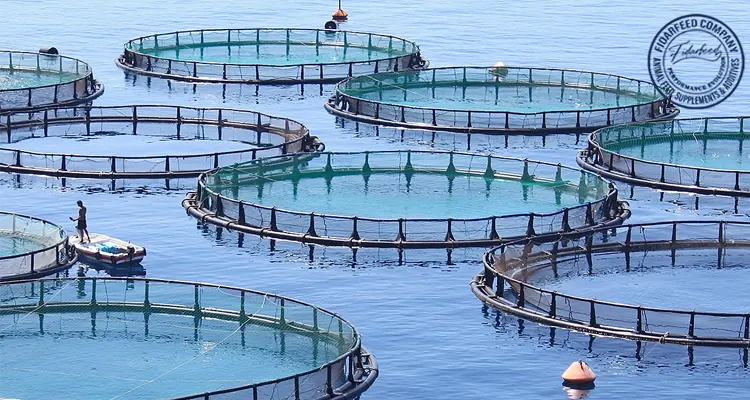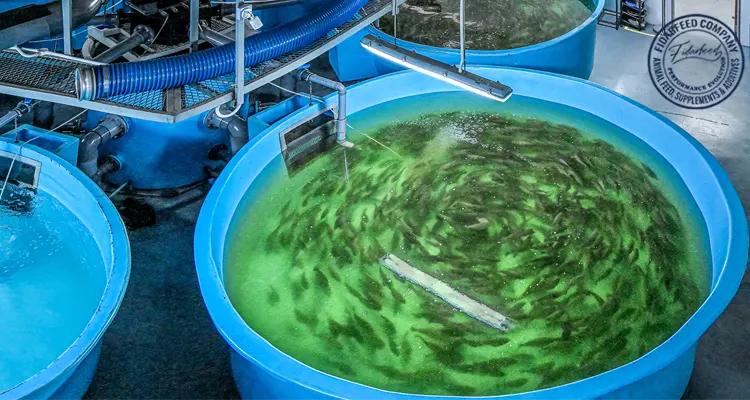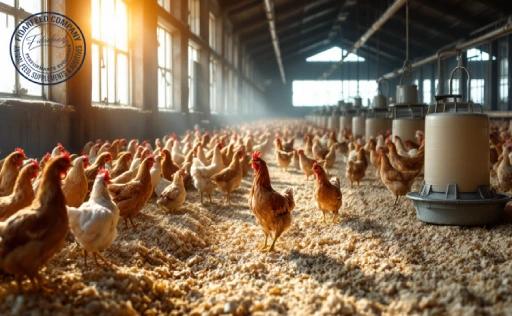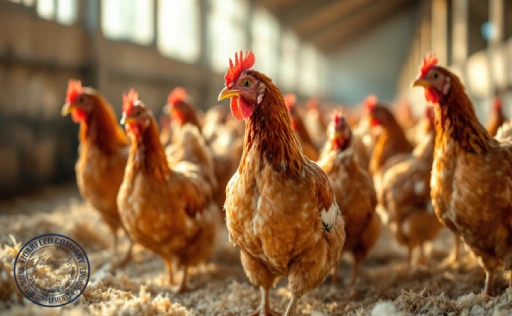Understanding Fish Growth in Aquaculture: Why It Matters
Fish Growth and Probiotics are two critical factors shaping the future of aquaculture. For fish breeders, achieving optimal growth rates is not just about increasing yields; it’s about maintaining healthy stock, reducing production costs, and ensuring sustainability. Faster, healthier fish growth means better feed conversion, stronger resistance to diseases, and ultimately, higher profitability. However, achieving consistent growth without relying on excessive antibiotics or chemicals remains a challenge. Could probiotics be the answer?
What Are Probiotics, and How Do They Work in Aquaculture?
Probiotics are beneficial live microorganisms, primarily bacteria and yeast, that support gut health, enhance digestion, and strengthen immunity.
Learn more about: Probiotic Supplement for Aquatic Animal
In aquaculture, probiotics function by improving the gut microbiome of fish, promoting better nutrient absorption, and inhibiting harmful pathogens. Instead of merely treating diseases after they occur, probiotics work preventatively, creating a balanced and resilient internal ecosystem within fish.
The Science Behind Probiotics and Fish Growth
Scientific studies confirm that probiotics can significantly enhance fish growth by optimizing digestion and reducing the energy expended on fighting infections. Certain probiotic strains, such as Bacillus subtilis, Lactobacillus spp., and Saccharomyces cerevisiae, have been shown to improve growth rates, survival rates, and feed conversion efficiency in species like tilapia, catfish, and shrimp.
Learn more about: How Are Farmed Fish Fed? Understanding Aquaculture Feeding Practices
By colonizing the gut with beneficial bacteria, probiotics help fish break down food more efficiently, absorb nutrients effectively, and reduce metabolic stress—leading to faster growth and better health.
Key Benefits of Using Probiotics in Fish Farming
Fish farmers adopting probiotics report a range of benefits beyond just growth enhancement. Some of the most impactful advantages include:
- Improved Feed Utilization: Probiotics enhance digestive enzyme production, ensuring fish extract the maximum nutrients from their diet.
- Enhanced Disease Resistance: A balanced gut microbiome strengthens the immune system, reducing the risk of bacterial infections like Aeromonas and Vibrio.
Learn more about: Why Choose Prepared Feed for Your Farm Animals: Livestock, Poultry, and Aquaculture
- Better Water Quality: Some probiotic strains help break down organic waste in fish ponds, maintaining cleaner water and reducing ammonia levels.
- Stress Reduction: Fish exposed to probiotics exhibit lower cortisol levels, making them more resilient to environmental stressors such as temperature fluctuations and overcrowding.
Choosing the Right Probiotics for Maximum Fish Growth
Not all probiotics are created equal. Fish breeders must select probiotic strains tailored to their specific species and farming conditions. Key factors to consider include:
- Strain Compatibility: Ensure the selected probiotic has been tested for your fish species.
- Survivability in Water: Some probiotics thrive in gut environments but struggle in aquatic settings; choose strains that can survive and multiply in water.
Learn more about: Stress in Aquaculture: Understanding the Effects and Mitigation Strategies
- Mode of Action: Some probiotics work by outcompeting harmful bacteria, while others boost digestion—select based on your farm’s primary needs.
- Quality and Viability: Ensure the probiotics you purchase contain live, viable cultures with a guaranteed shelf life.
How to Use Probiotics Effectively in Aquaculture
To maximize the benefits of probiotics, proper application is essential. Common methods include:
- Incorporation into Feed: Coating fish feed with probiotics ensures direct ingestion, enhancing gut health.
- Water Application: Adding probiotics directly to the water helps improve water quality and indirectly benefits fish growth.
Learn more about: Protect Your Aquatic Life with Probiotics
- Regular Dosing: Consistency is key—irregular probiotic use can limit long-term effectiveness.
- Storage Conditions: Probiotics should be stored in cool, dry conditions to maintain potency.
Do Probiotics Work for All Types of Fish?
Different fish species respond differently to probiotics. Research shows that commonly farmed species like tilapia, carp, and shrimp experience substantial growth benefits.
Learn more about: Reducing Fish Mortality in Aquaculture with Probiotics
However, results may vary for species with unique digestive systems, such as carnivorous fish like salmon and trout. While probiotics generally promote health in all fish, their impact on growth rates can depend on diet composition, environmental factors, and initial gut microbiome conditions.
Challenges and Limitations: Are Probiotics Always Effective?
While probiotics offer promising benefits, they are not a one-size-fits-all solution. Some challenges include:
- Variability in Results: Environmental factors, water quality, and farm management practices can affect probiotic efficacy.
- Cost Considerations: High-quality probiotics may be expensive, making them a significant investment for small-scale farmers.
Learn more about: Get the Best Value: Ready-Made Feed for Livestock, Poultry & Aquaculture
- Time for Visible Effects: Unlike antibiotics, probiotics work gradually; it may take weeks to notice improvements in fish growth and health.
- Misuse and Overuse: Overusing probiotics or using low-quality products can lead to inconsistent results.
Probiotics vs. Antibiotics: A Sustainable Approach to Fish Growth
For decades, antibiotics were widely used to control diseases and enhance growth in aquaculture. However, overuse has led to antibiotic resistance, environmental pollution, and regulatory restrictions.
Learn more about: Feeding Farmed Fish: Best Practices and Nutritional Requirements
Probiotics provide a natural, eco-friendly alternative. Unlike antibiotics, which eliminate both harmful and beneficial bacteria, probiotics selectively enhance the good microbes, creating a healthier and more sustainable growth environment for fish. Many fish farmers are now shifting to probiotics as a long-term solution to maintaining productivity without harming the ecosystem.
Final Thoughts: Should You Use Probiotics for Better Fish Growth?
The evidence is clear—probiotics can play a vital role in enhancing fish growth, improving feed efficiency, and reducing disease risks in aquaculture. While they are not a magic bullet, when used correctly, probiotics can significantly improve fish health and farm productivity. If you’re a fish breeder looking for a sustainable way to boost growth and improve overall aquaculture performance, incorporating probiotics into your feeding and water management practices is a smart move.
What do you think? Have you tried using probiotics in your fish farm? Share your experiences and questions in the comments below!








